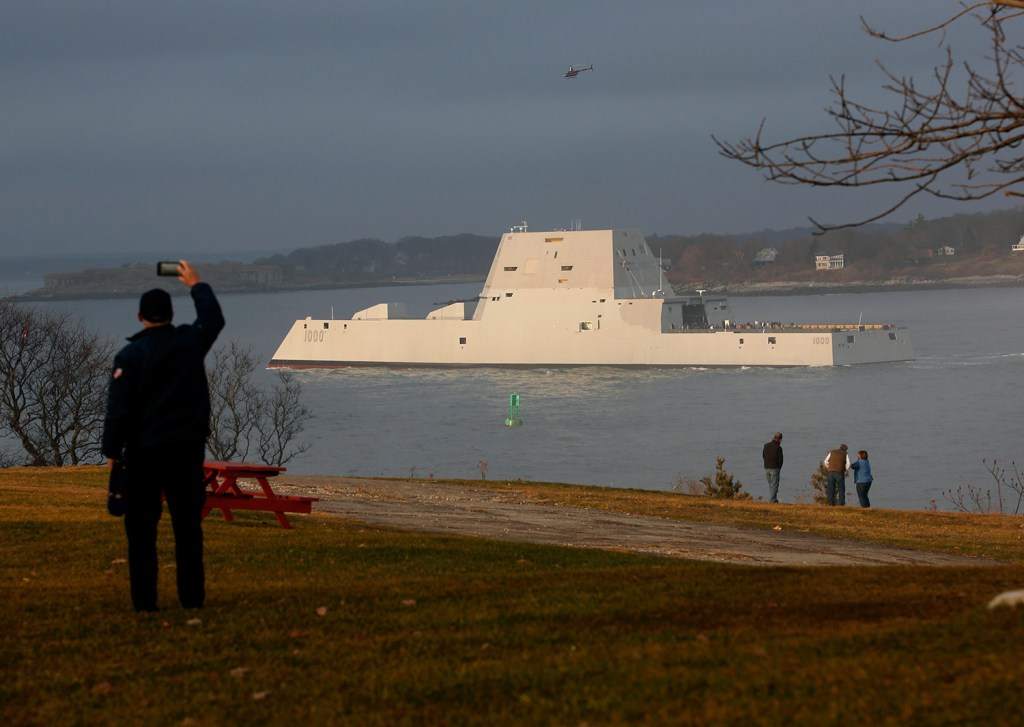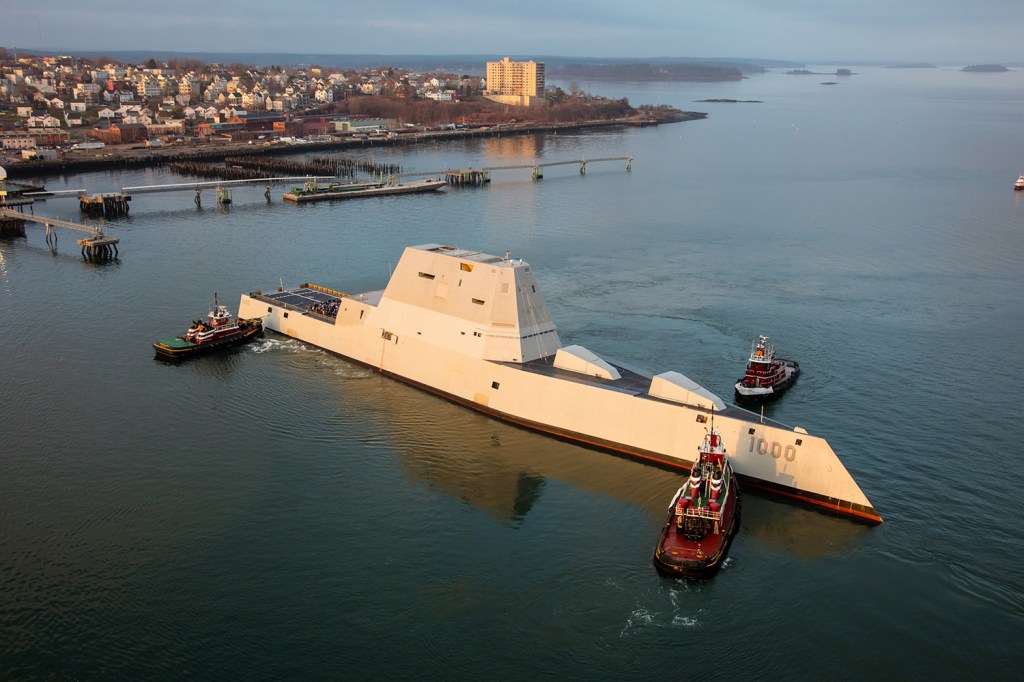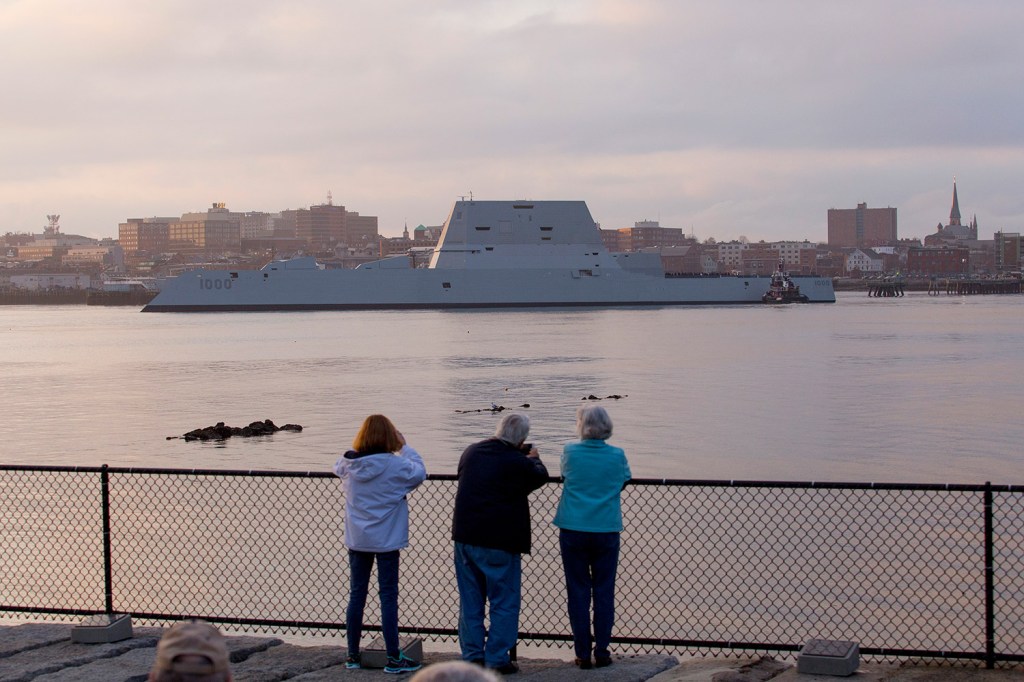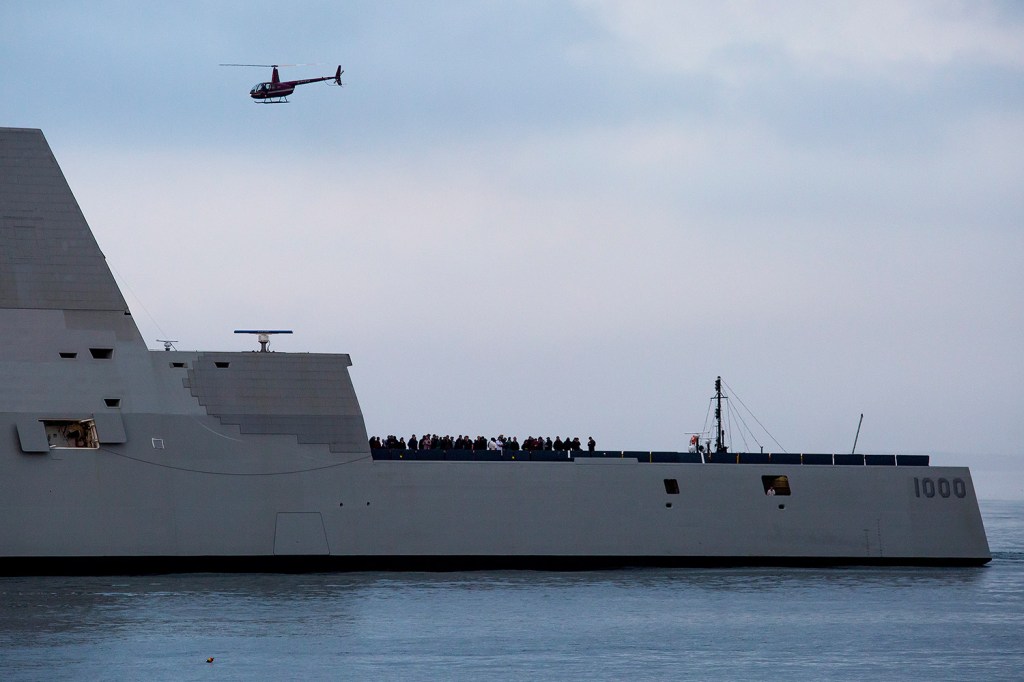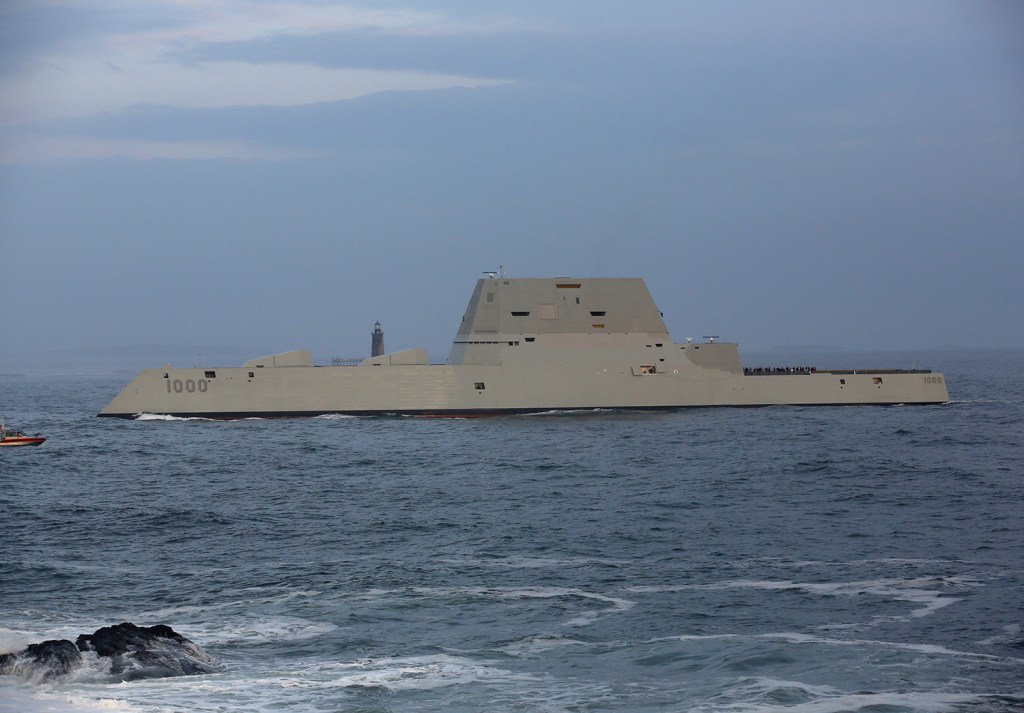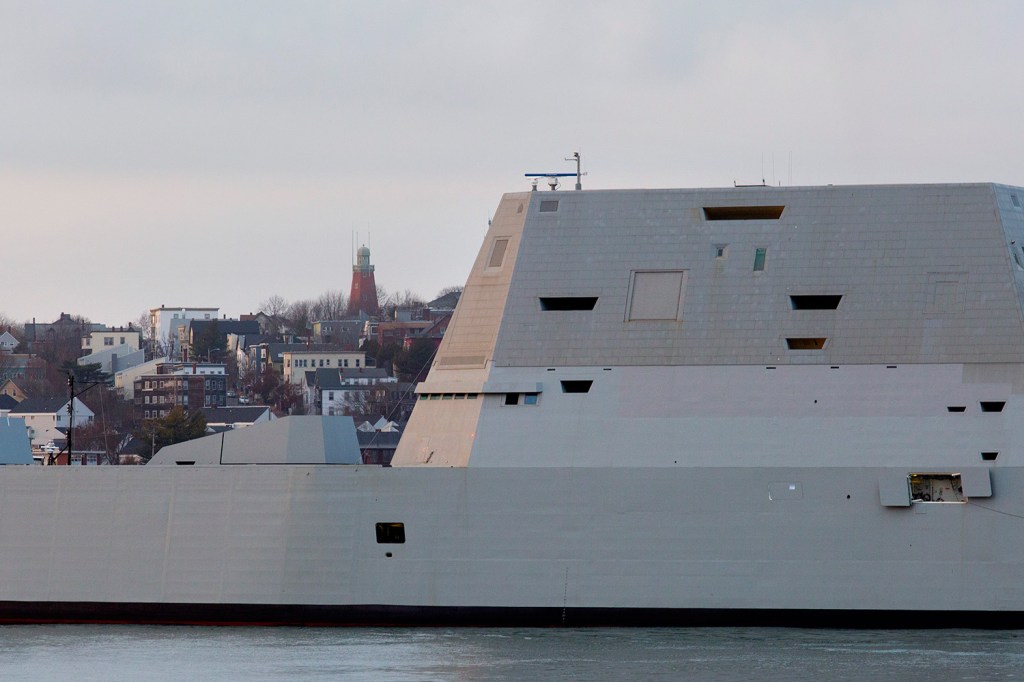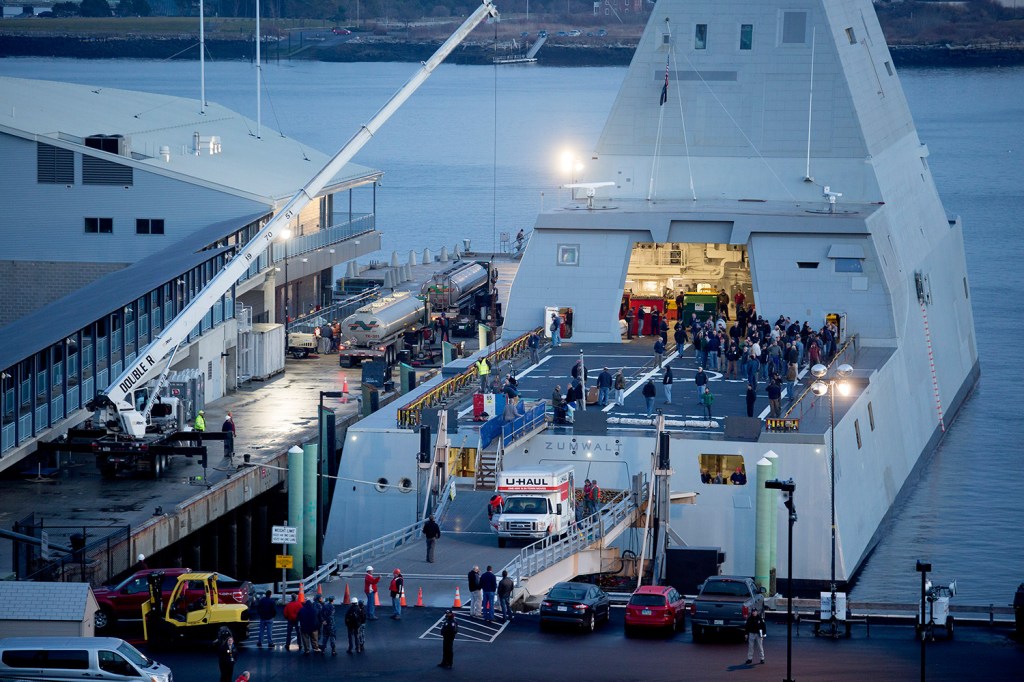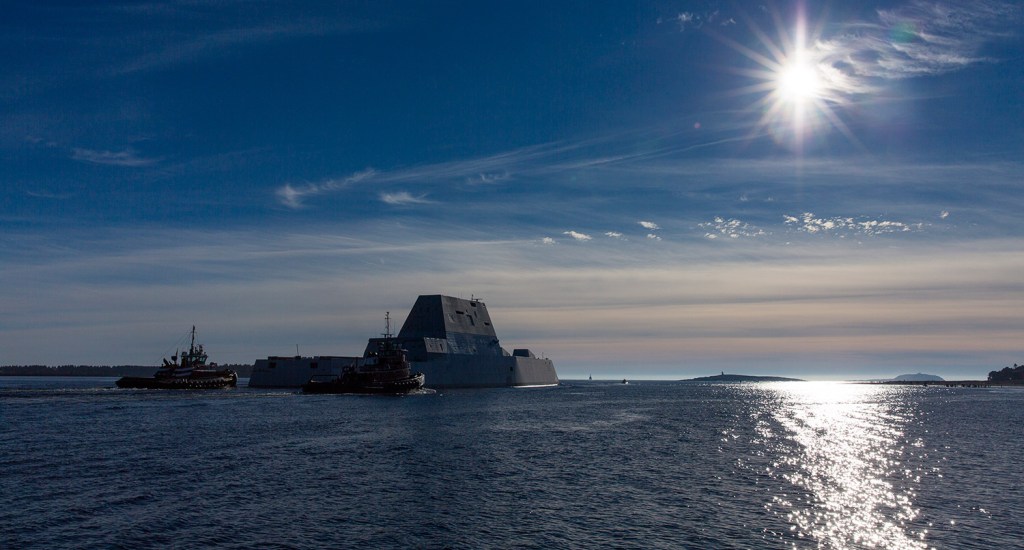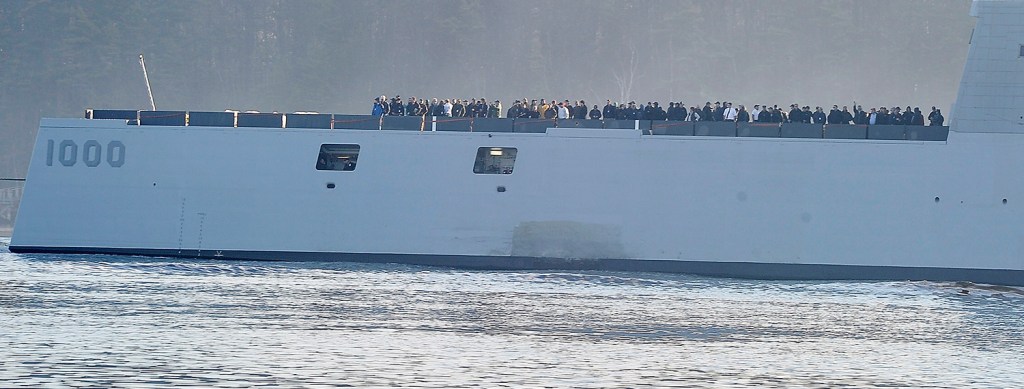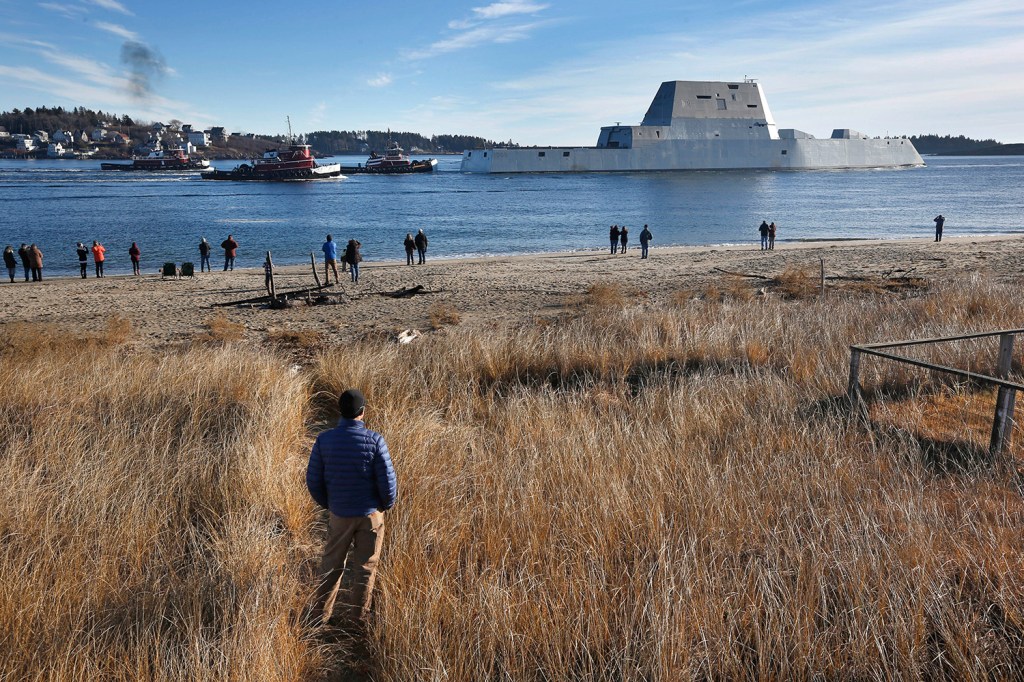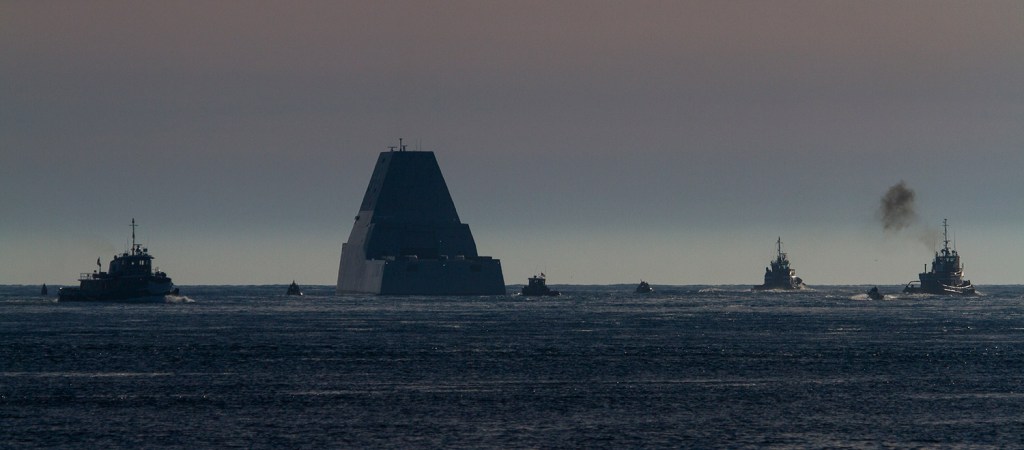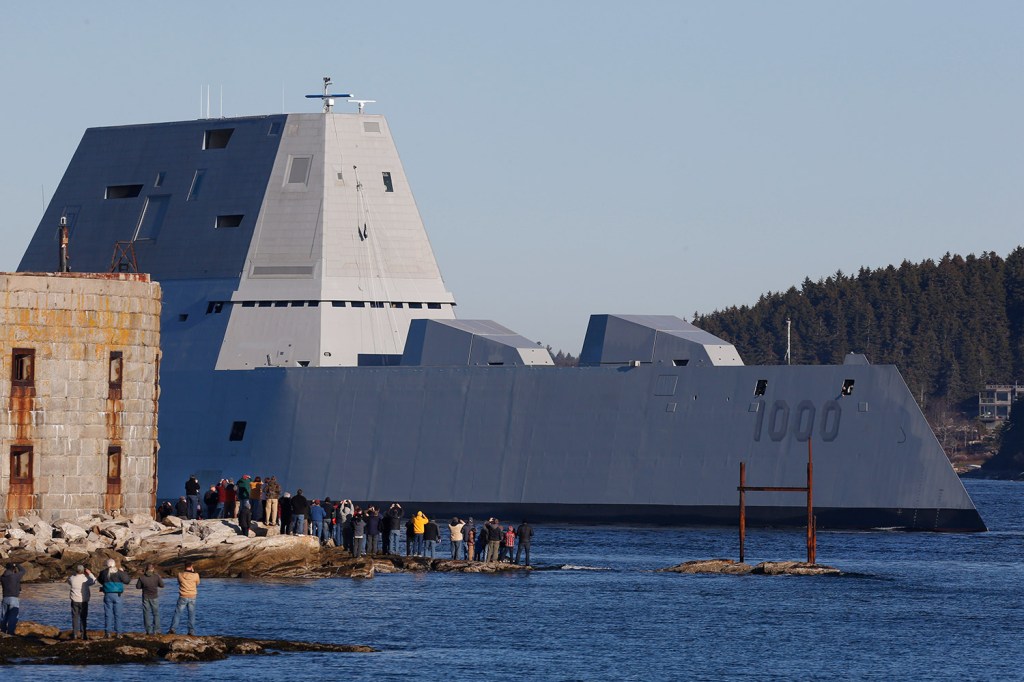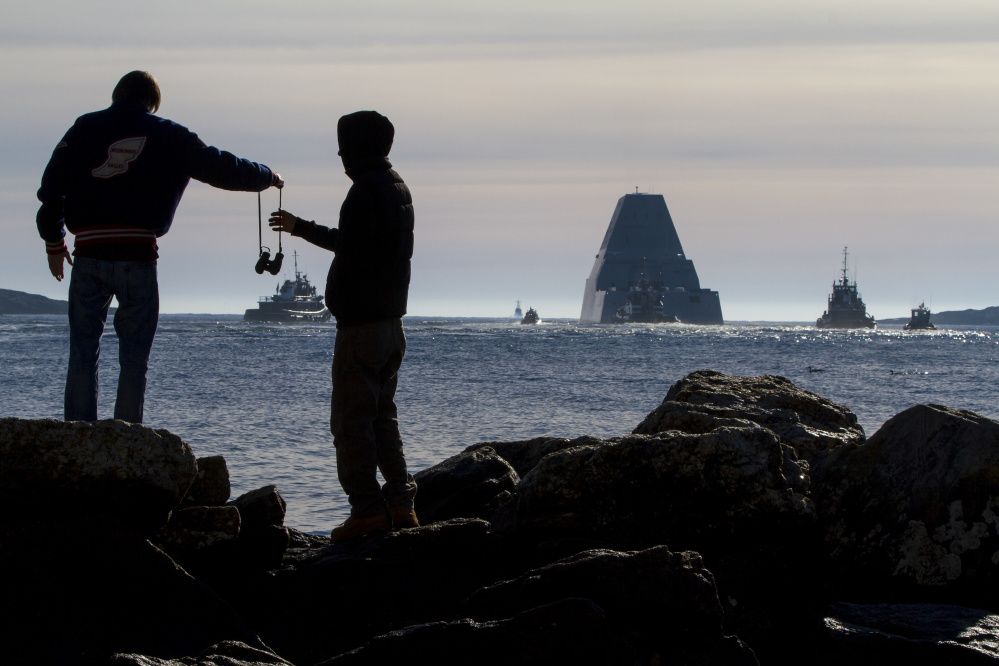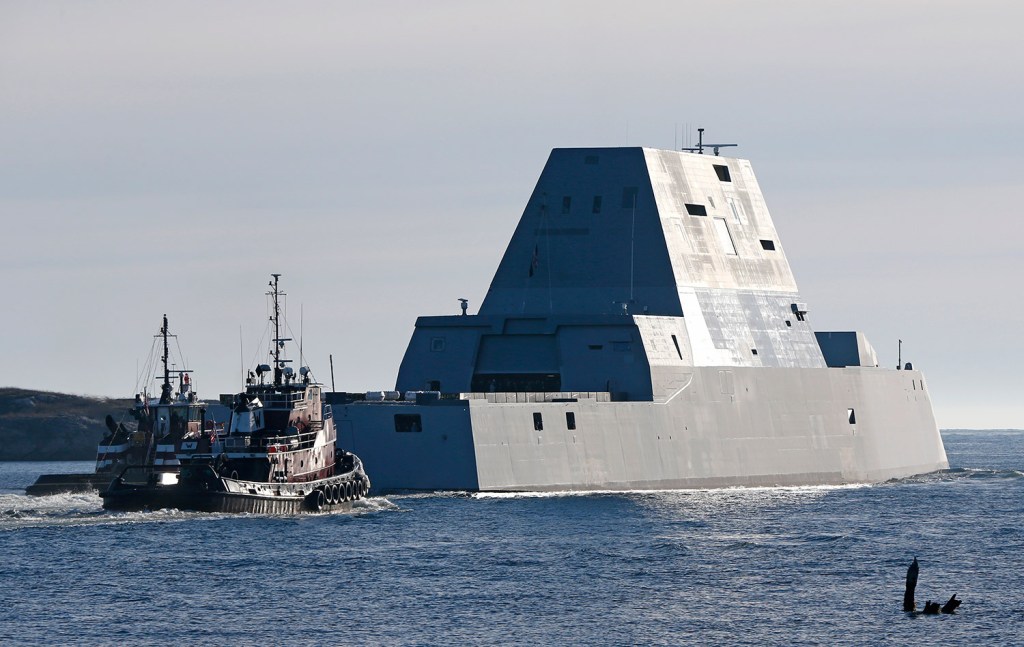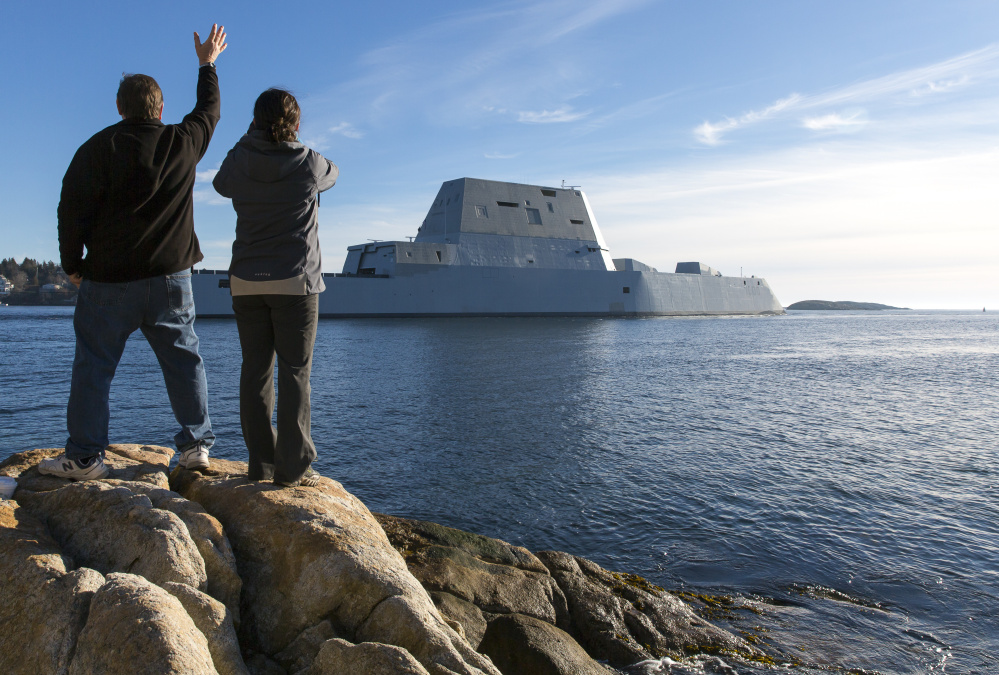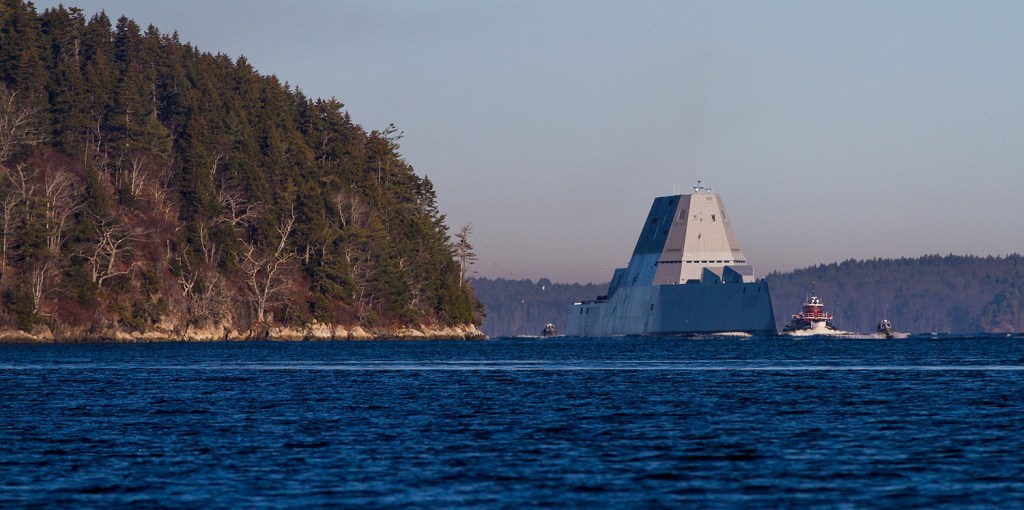Workers at Bath Iron Works will bid farewell next week to the Zumwalt – the most technologically advanced destroyer ever built for the Navy – even as they await word on whether the shipyard won a Coast Guard contract that could keep 1,000 or more workers from being laid off.
The Zumwalt is slated to leave BIW’s pier in Bath Wednesday and sail down the Kennebec River one final time before being commissioned and joining the Navy’s Pacific fleet. The ship’s departure formally ends more than seven years of construction on a first-of-its-class destroyer with a price tag exceeding $4 billion. It also highlights the importance of the Coast Guard contract for BIW, which currently depends entirely on Navy work.
BIW officials expect to learn this month whether the shipyard beat out two Gulf Coast competitors to build the first of nine offshore patrol cutters the Coast Guard will use to begin replacing ships that, in some cases, have been in service for 50 years. The full, 25-ship contract is worth an estimated $10.5 billion and will provide years of work to the winning shipyard – an especially attractive prospect for BIW, which is facing a drop-off in destroyer orders from the Navy.
Officials are expected to award the contract before the start of the new fiscal year on Oct. 1, according to Coast Guard spokeswoman Lisa Novak. BIW is competing for the work against two smaller, more diversified, nonunion yards – Bollinger Shipyards in Lockport, Louisiana, and Eastern Shipbuilding in Panama City, Florida.
“The hardworking men and women at BIW have proven time and again that Bath built is best built,” Sens. Susan Collins and Angus King said in a joint statement. “We will continue to follow the Coast Guard’s contract award process, and remain confident that Bath Iron Works has submitted a solid bid to design and build this new class of Coast Guard cutter.”
A YARD IN FLUX
The current view of the sprawling shipyard on the Kennebec River belies the challenges facing the General Dynamics subsidiary if it doesn’t win the Coast Guard contract.
Roughly $10 billion in naval hardware is now floating at BIW’s piers: two Zumwalt-class destroyers still to be completed, each expected to cost in excess of $4 billion, plus an Arleigh Burke-class destroyer with a price tag approaching $2 billion. It is the first time in years that so many destroyers have been tied up in the Kennebec River in Bath at the same time. But it is unlikely to be repeated in the foreseeable future.
On Wednesday, the future USS Zumwalt – a $4.4 billion “stealth” warship unlike any other in naval history – is slated to depart BIW under Navy ownership likely for the final time. The ship is expected to be commissioned during a Navy ceremony in Baltimore on Oct. 15 before departing for San Diego, its home port.
About 150 sailors under the command of Capt. James A. Kirk will be attached to the Zumwalt when it leaves Maine Wednesday, weather permitting.
The largest and most advanced destroyer ever built for the Navy, the Zumwalt is designed for stealth with its sharp, angular features, inward-sloping – or “tumblehome” – hull and smooth exterior surfaces. The result, according to the Navy, is a 610-foot warship with the radar footprint of a fishing vessel. The Zumwalt also features the Navy’s first all-electric power plant and advanced weaponry, including guided missiles and “long-range land attack projectiles” capable of destroying targets more than 60 miles away without the use of a warhead.
But as the Zumwalt’s price tag increased and the global military landscape changed, Navy officials slashed the number of Zumwalt-class destroyers on their wish list from 32 to three. The second of the three Zumwalt-class destroyers, the future USS Michael Monsoor, is slated for delivery to the Navy next year, while the third ship is under construction.
CONTRACT CRITICAL TO SHIPYARD
While BIW also builds the smaller Arleigh Burke-class destroyers that have been workhorses of the Navy fleet for decades, it shares that work with competitor Ingalls Shipbuilding in Pascagoula, Mississippi. BIW officials have warned that, without the Coast Guard contract, the shipyard may have to shed 1,000 to 1,200 of its 5,600 jobs after construction of the Zumwalt-class destroyers is complete.
“There has probably not been a time in Bath’s past where it’s more critical for us to be more efficient than ever before,” Fred Harris, president of BIW, said in a 2014 interview as BIW prepared its Coast Guard bid. “I worry about the nation’s resolve to continue to build (Navy) ships long after I’m gone (from BIW). So we have to set the foundation here that we’re the guys left to build those ships and not other shipyards in the U.S.”
Harris’ push to increase efficiency and reduce costs – in part by outsourcing jobs now done in-house at BIW – caused tensions with the shipyard’s largest labor union. But both sides acknowledge that the Coast Guard contract is critical to the shipyard.
The commandant of the Coast Guard, Adm. Paul Zukunft, has said the offshore patrol cutter is the service’s top budget priority. The 25 cutters will replace the medium-endurance cutters that have been used for decades for border security, drug interdiction, commercial fisheries enforcement and search-and-rescue operations.
“The OPC will feature state-of-the-market technology and will replace the service’s 270-foot and 210-foot medium-endurance cutters, which are becoming increasingly expensive to maintain and operate,” according to a Coast Guard fact sheet on the offshore patrol cutter. “These medium-endurance cutter classes have been in operation for 25 to 50 years and are in many respects technologically obsolete. The OPC is the most affordable way to meet the service’s long-term need for cutters capable of deploying independently or as part of task groups to conduct law enforcement, search-and-rescue, homeland security and defense missions.”
The last Coast Guard ship built by BIW was the Perseus, a 165-foot cutter delivered to the service in April 1932.
Send questions/comments to the editors.





